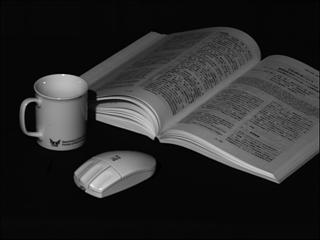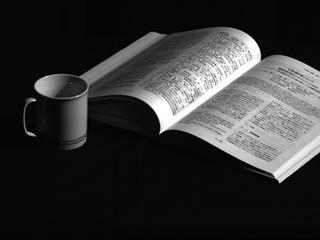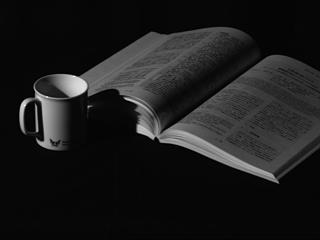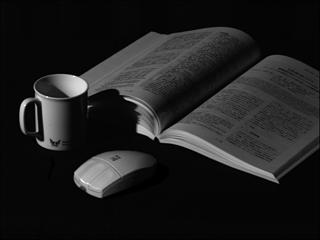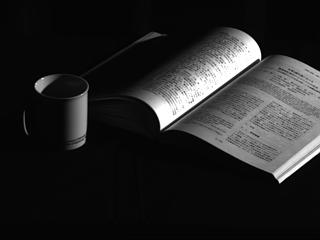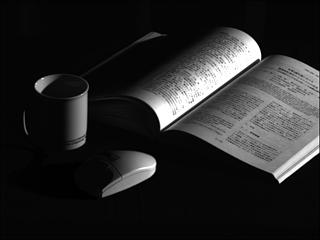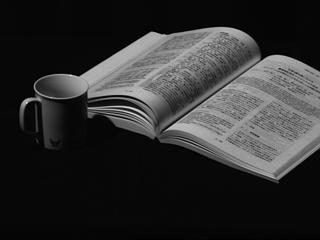This web page is a summary of
Y.Mukaigawa, S.Mihashi and T.Shakunaga,
"Photometric Image-Based Rendering for Virtual Lighting Image Synthesis",
Proc. of Second IEEE and ACM International Workshop
on Augmented Reality (IWAR'99), pp.115-124, (1999)
This page contains only experimental results. If you want to know
the details of our PIBR method, please read the proceedings of
IWAR'99.
You can get PostScript file of the full paper here.
(PostScript:1.8MB)
Photometric Image-Based Rendering for Virtual Lighting Image Synthesis
Yasuhiro MUKAIGAWA, Sadahiko MIHASHI and Takeshi SHAKUNAGA
Abstract
A concept named Photometric Image-Based Rendering (PIBR) is
introduced for a seamless augmented reality. The PIBR is
defined as Image-Based Rendering which covers appearance
changes caused by the lighting condition changes, while
Geometric Image-Based Rendering (GIBR) is defined as
Image-Based Rendering which covers appearance changes caused
by the view point changes. The PIBR can be applied to image
synthesis to keep photometric consistency between virtual
objects and real scenes in an arbitrary lighting condition.
We analyze the conventional IBR algorithms, and formalize the
PIBR in the whole IBR framework. A specific algorithm is also
presented for realizing the PIBR. The photometric
linearization makes a controllable framework for the PIBR,
which consists of four processes; (1) separation of
environmental illumination effects, (2) estimation of lighting
directions, (3) separation of specular reflections and
cast-shadows, and (4) linearization of self-shadows. After the
photometric linearization of input images, we can synthesize
any realistic images which include not only diffuse
reflections but also self-shadows, cast-shadows and specular
reflections. Experimental results show that realistic images
can be successfully synthesized with keeping photometric
consistency.
Photometric Image-Based Rendering
First, we show image syntheses of a glossy ceramic pot. Keeping a
halogen light in the long distance from the pot, we took 27 images
with changing the lighting source position. The input images are
linearized, and the principal component analysis was accomplished to
make three optimal base images. Several lighting directions
corresponding to the coefficients were specified, and virtual images
were synthesized. We show one of the synthesized images as follows.
The left is a synthesized image without linear factors. Both diffuse
reflections and self-shadows are correctly synthesized. The right is
a synthesized image with linear factors, which were selected by the
nearest neighbor method. We can see that the realistic images with
the appropriate surface properties can be synthesized by the proposed
PIBR method.

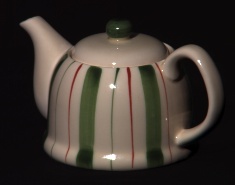
Synthesized image by the PIBR.
LEFT: Synthesized image without nonlinear factors.
RIGHT: Synthesized image with nonlinear factors.
You can see a movie sequence by clicking on each image.
(MPEG: 2MB)
Application for Augmented Reality
Next, we show some results of mixing virtual objects and real scenes
with keeping the photometric consistency. The left images are real
scenes in which the virtual object is to be mixed. The virtual object
is synthesized by the PIBR to have the same lighting direction as the
real scene. The right images are the mixed images, a mouse is a
virtual object while a cup and a book are real ones. Since the
photometric property is consistent between the real scene and the
virtual object, the mixed image looks realistic.

